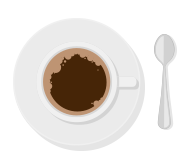Web Design
A good design can amplify or distort the message you want to pass on to your customers and potential customers.Beyond the specific technical parameters (load speed, W3 code validation, image optimization dimensions, etc.) and depending on the kind of visual communication that our partners want to keep in mind, we always have some important things that deserves being read at a coffee :)
 1.Colors
1.Colors
In the case of redesigning or "upgrading":), the first step is to identify the colors with which the brand is associated. Whether we are talking about the registered trademark or not, any existing website has a color identity that in over 90% of cases should be kept in order not to induce confusion among old customers.
In the case of new elements, the coloring elements must be chosen according to the adherence values of the brand under which the new online product will operate (eg: dynamic versus relaxation, color identities accepted as the norm for products / services: green / forest / environment, blue : Water, services and products associated with water, relaxation areas, etc., red - products associated with extreme fire or dynamics, etc.)
One aspect to be noted is whether or not gradients and backgroups are to be adjusted depending on the type of layout (responsive or not)
 2.Fonts
2.Fonts
Although seemingly simple, it requires a lot of attention.
The main purpose of the fonts is to convey the message in a form that is understandable regardless of the type of device used (phone, tablet, laptop, desktop).
The second goal is to highlight and amplify the message.
The third objective is to have close graphic alignment with the rest of the design and content.
And obviously another goal is to differentiate from the rest of the websites as far as it is possible.
And let's not forget that it must be recognized by most browsers.
Many of the previously created websites had a huge font problem.
The problem was very simple: online applications created in the past addressed a desktop resolution that in some cases even went up to 800x600 pixels.
Yes, it is surprising that there are still such products at the moment.
The main problem was given by the fact that in combination with an outdated layout, it resulted in the display of content that was difficult to read / received by the target audience.
 The purpose of the design is to guide the audience to the content and to emphasize the message they want to be transmitted. Also, your web layout must lead to the availability and reception of your message and content irrespective of the type of device you are using.
The purpose of the design is to guide the audience to the content and to emphasize the message they want to be transmitted. Also, your web layout must lead to the availability and reception of your message and content irrespective of the type of device you are using.
Another element to consider is the use of the latest web technologies in both the html display and css elements.
In any layout, must be taken into account an element that seems seemingly banal: the space. Although it seems so simple and obvious sometimes even looked of this element and so the content becomes hard to read and sometimes incoherently.
Also, with respect to the layout, you need to keep in mind both the header / footer / navigation and the first types of information available to the user - the so-called first half of the screen.
Once the main layout elements have been set, they must be adjusted to match the design's simplicity parameter - removing ornamental illustrations that are unrelated to either the brand or the message. Very many have mistaken the fact that a very loaded and hard-to-display layout corresponds to a very good content.
Let's not forget that the design element has a major influence on the technical parameters of the search engines, including the proportion between the text content and the amount of code needed to display it at this time.
And obviously we should also remember here the proportions to be considered depending on the type of content on each page.
 One of the biggest and most difficult issues because:
One of the biggest and most difficult issues because:
- content must be unique
- content must be clear and descriptive
- Content contrary to majority parity is not limited to text.
Also includes image and video. It is very often expressed that at present we live in an almost exclusively visual period. Sometimes content, even audio, is a separate chapter currently unavailable for quantification and measurement tools.
- Illustrations must match the subject and be chosen so as to count.
- Text content must be legible, clear and easy to assimilate by the type of user you want.
- When used in design or in the content of icons, these must be clear, easy to recognize, and not distract from the content, but only to mark an easier understanding of it.
